Advanced Search
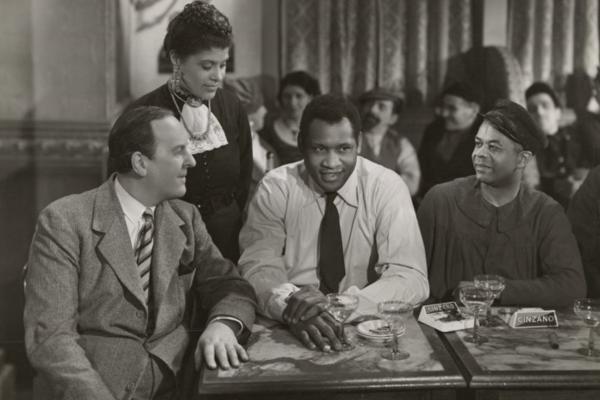
Scene from motion picture Big Fella. Standing is Paul Robeson’s wife and business manager, Eslanda Goode Robeson; at right is Paul’s longstanding accompanist and musical arranger, Lawrence Brown.
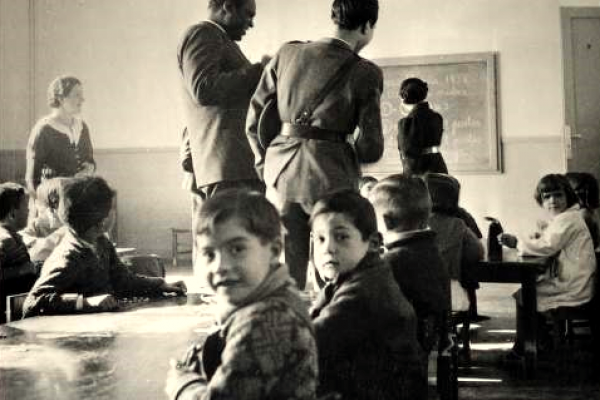
Robeson and Captain Fernando Castillo at the Karl Marx School in Madrid
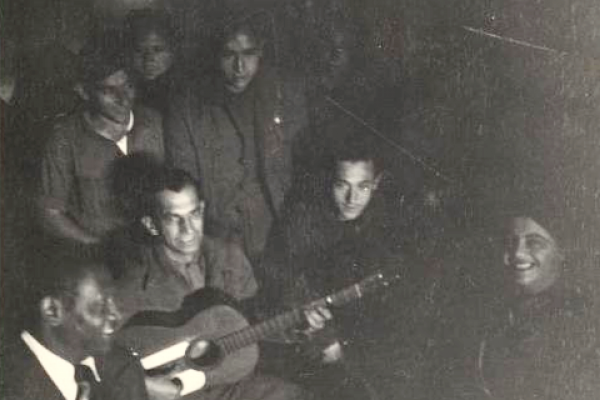
Paul Robeson with freedom fighters at the Madrid battlefront. Sometimes under artillery and machine-gun fire, Robeson visited the shifting battlefronts to bolster the fighting spirit of the Republicans and their communist allies with his songs.
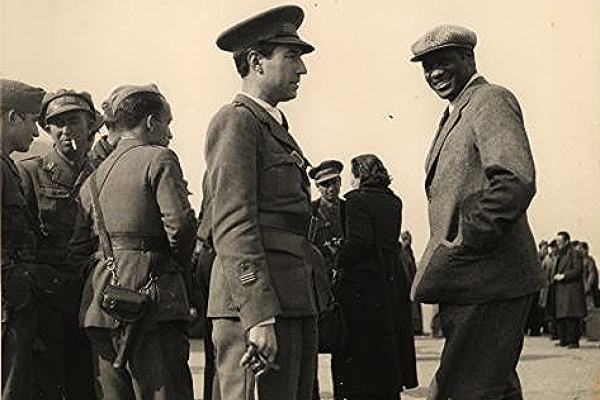
Paul Robeson with his Spanish guide to the battlefronts, Captain Fernando Castillo. Paul supported the Republican/Loyalist cause in their war against the army of the fascist Generalissimo Francisco Franco.
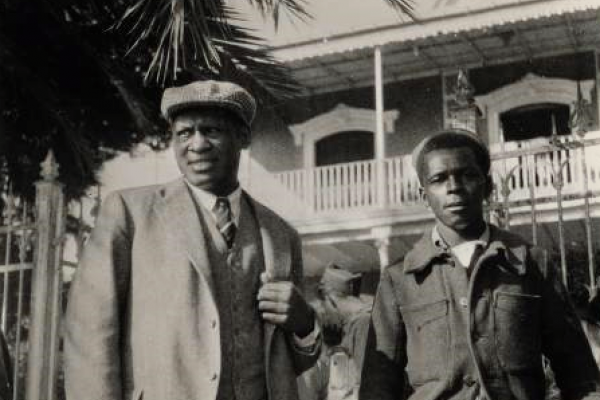
At a hospital base near Valencia, Spain, with an African American solider of the International Brigade. Sometimes under artillery and machine-gun fire, Robeson visited the shifting battlefronts to bolster the fighting spirit of the Republicans and their Communist allies with his songs. He befriended African American volunteers in the war against the fascist army of Generalissimo Francisco Franco.
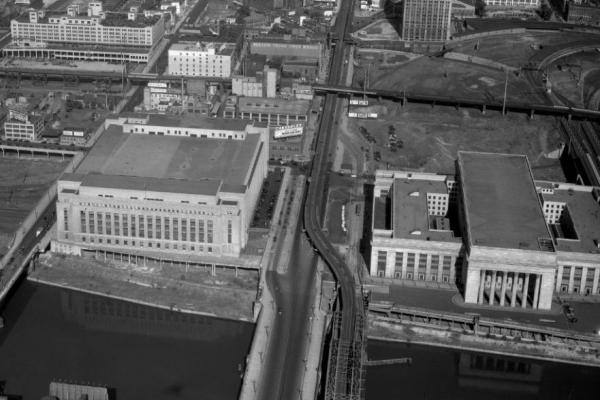
This 1939 aerial photo shows the relationship of the Market Street Bridge and the El between the U.S. Post Office (left) and 30th Street Station (right). Trolley tracks can be seen on the bridge.
Crystal Pool’s thinly veiled Whites-only membership policy and various subterfuges denied Blacks access to facilities that could accommodate 5,000 swimmers. Crystal Pool was integrated only after the City took control of its management in 1952.
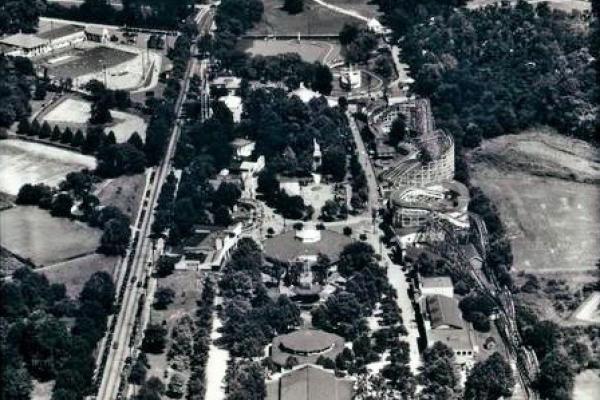
This aerial photo shows the design of Woodside Park in the late 1930s. The four-acre Crystal Pool appears in the upper-left corner of the image. From its opening in 1926.
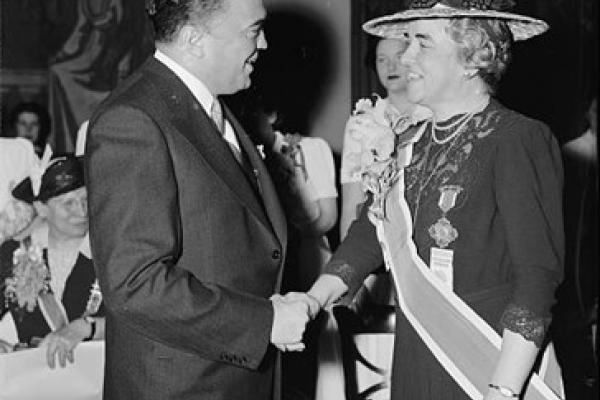
FBI Director J. Edgar Hoover in 1940, on the eve of his agency beginning its surveillance of Paul Robeson. Hoover remained Robeson’s nemesis in the first two decades of the Cold War era.
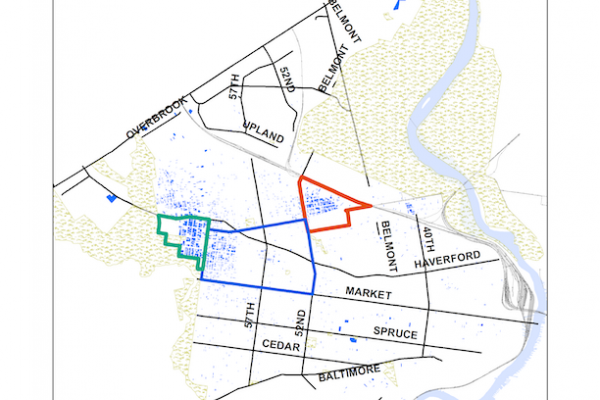
South Philadelphia is well-known for its population of Italian immigrants. However, 6,600 Italians immigrants lived in West Philadelphia in 1940, second only to Russian-born Jews. They settled in two areas. Half lived in Morris Park and the neighboring areas of Haddington west of 60th St. and southern Overbrook west of Wynnewood Rd. One-fourth of adults in this area were born in Italy; 40% were either born in Italy or had a parent born there.
The other area was in Cathedral Park which was the home to another one-fifth of West Philadelphia’s Italians. That neighborhood was split into two sections on opposite sides of Cathedral Cemetery. South of the cemetery was predominately Irish. North of the cemetery was predominately Italian. Between the cemetery and Lancaster Ave., 23% of adults were born in Italy—37% were either born there or had a parent who was.

Russians were one of the largest immigrant groups in West Philadelphia in 1940. They accounted for about 7% of adults. We know from the 1930 Census that almost all individuals in West Philadelphia who were born in Russia were Jews who spoke Yiddish. Not all Jews in West Philadelphia were born in Russia. For example, 64% of immigrants from Poland reported speaking Yiddish.
The Jewish population of West Philadelphia increased rapidly after the turn of the century. In 1900, there were only 241 Immigrants from Russia. By 1920, this had increased to about 12,000 and in 1930 it was over 18,000. Most of this increase probably occurred before 1924 when Congress limited immigration from Eastern Europe. Despite the concentration of Jews in parts of West Philadelphia, more than three quarters of Yiddish-speakers in Philadelphia lived in other parts of the city.
The largest concentration of Yiddish-speakers in West Philadelphia was in Cobbs Creek – about 6,500 in 1930. The other prominent concentrations were in Wynnefield and Wynnefield Heights (4,750) and East Parkside and northern Belmont (3,936).
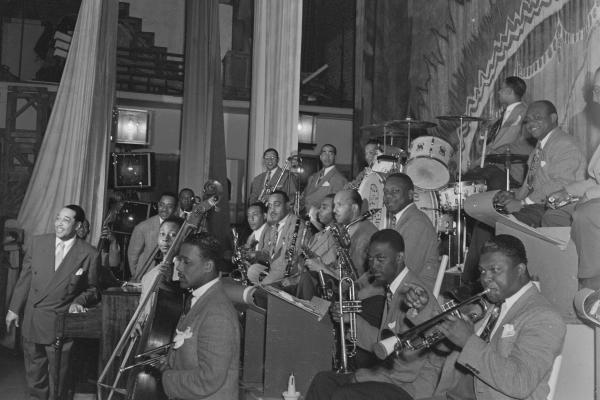
Duke Ellington (pictured on left) frequently performed at Fay’s Theatre during its golden age.